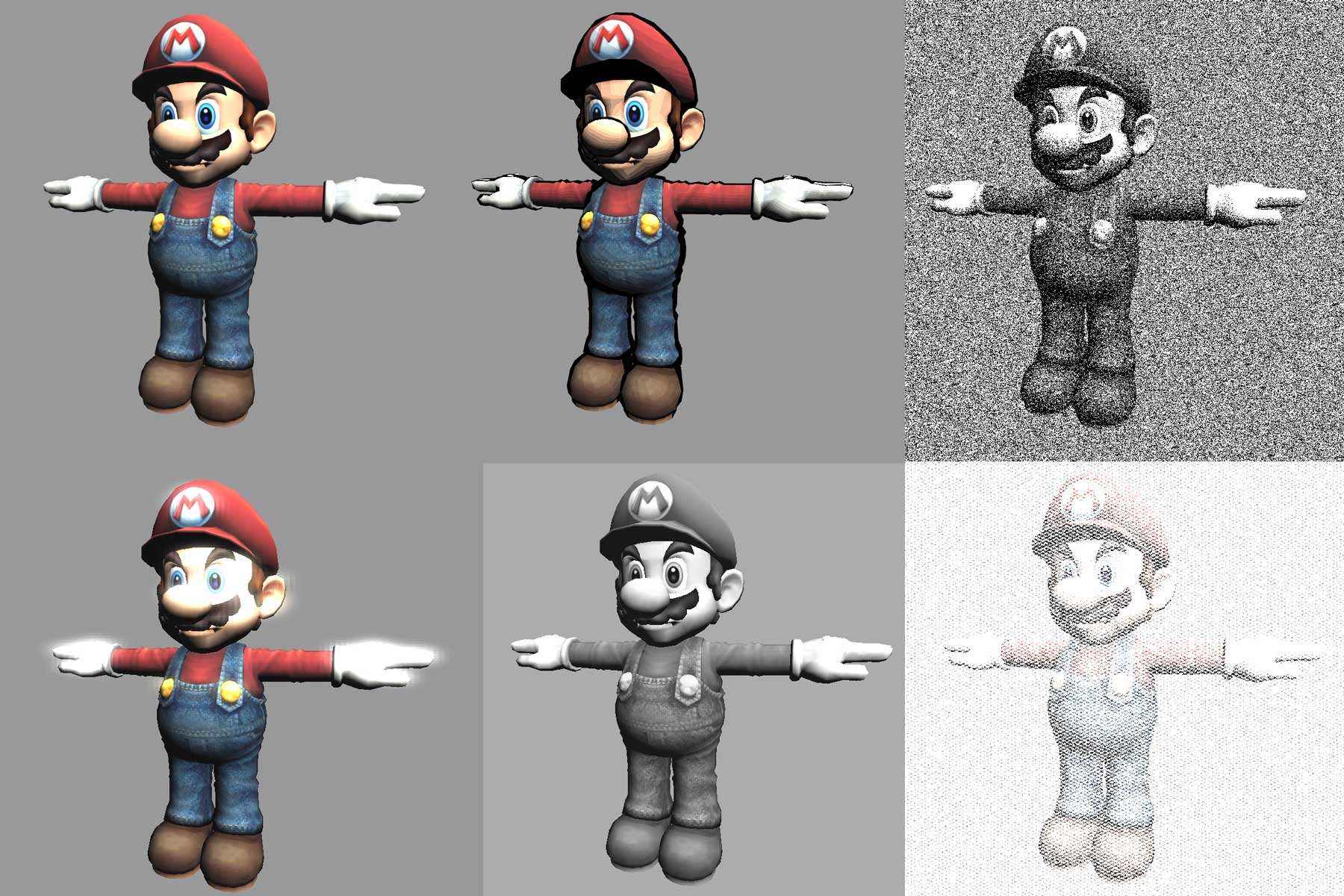
Procedural Graphics
Procedural generation is creating a process to create a thing. With basic shapes and general principles for how they fit together, forests and cities can easily be generated. The following are projects from CIS 700: Special Topics in Procedural Graphics, Spring 2017. I was a teaching assistant for this graduate level computer science course in Spring 2018.
Biocrowds
Biocrowds is a crowd simulation algorithm based on the formation of veination patterns on leaves. It is a space colonization algorithm. First markers are splatted onto walkable areas. Then on each frame, each marker is owned by the agent that is closest to it, within a certain radius, and is in the gaze of the agent. Agent velocity at the next frame is then computed using a sum of the displacement vectors to each of its markers. Because a marker can only be owned by one agent at a time, this technique prevents agents from colliding.
Implicit Surfaces: Ray Marching
Ray marching is a technique for rendering implicit surfaces where the ray-primitive intersection equation cannot be solved analytically. The ray marcher generates a ray and marches through the scene using the distances computed from sphere tracing.
Signed-distanced functions (SDFs) take an input point and return the shortest distance to the surface of the shape. Spheres are defined as the distance from the center of the sphere.
More complicated SDFs include constructive geometry wherein we can intersect, subtract, or unite simple shapes together.
Shaders
Shaders are used to generate appropriate levels of light, darkness, and color for 3D scenes. In the following demo, I implemented lambert, toon, and iridescent shaders. I also implemented the following post-processed effects: greyscale, pointillism, gaussian, bloom, hatching, vignette, and linear.
Shape Grammar
A procedurally generated city starts with shapes and grammar for how those shapes fit together. Cities of any size can be generated using this syntax. The following is a simplified version of a procedurally generated city.
L-System
Similarly, the L-system is a way to generate trees at the rendering stage using symbols and an initial axiom.
Wing Generation
Created a wing with feathers that are larger at the top of the arm and smaller lower down on the wing. The colors and size are customizable as well as the wind speed.
Noise Cloud Generation
Perlin noise is a multi-octave noise algorithm that produces a seamless texture. It is then visualized on the surface of a sphere as height and animated.
For CIS 700: Special Topics in Procedural Graphics, Spring 2017
Programming Languages: Javascript, Three.js, GLSL
These projects we done in the time span of a week each unless otherwise noted.